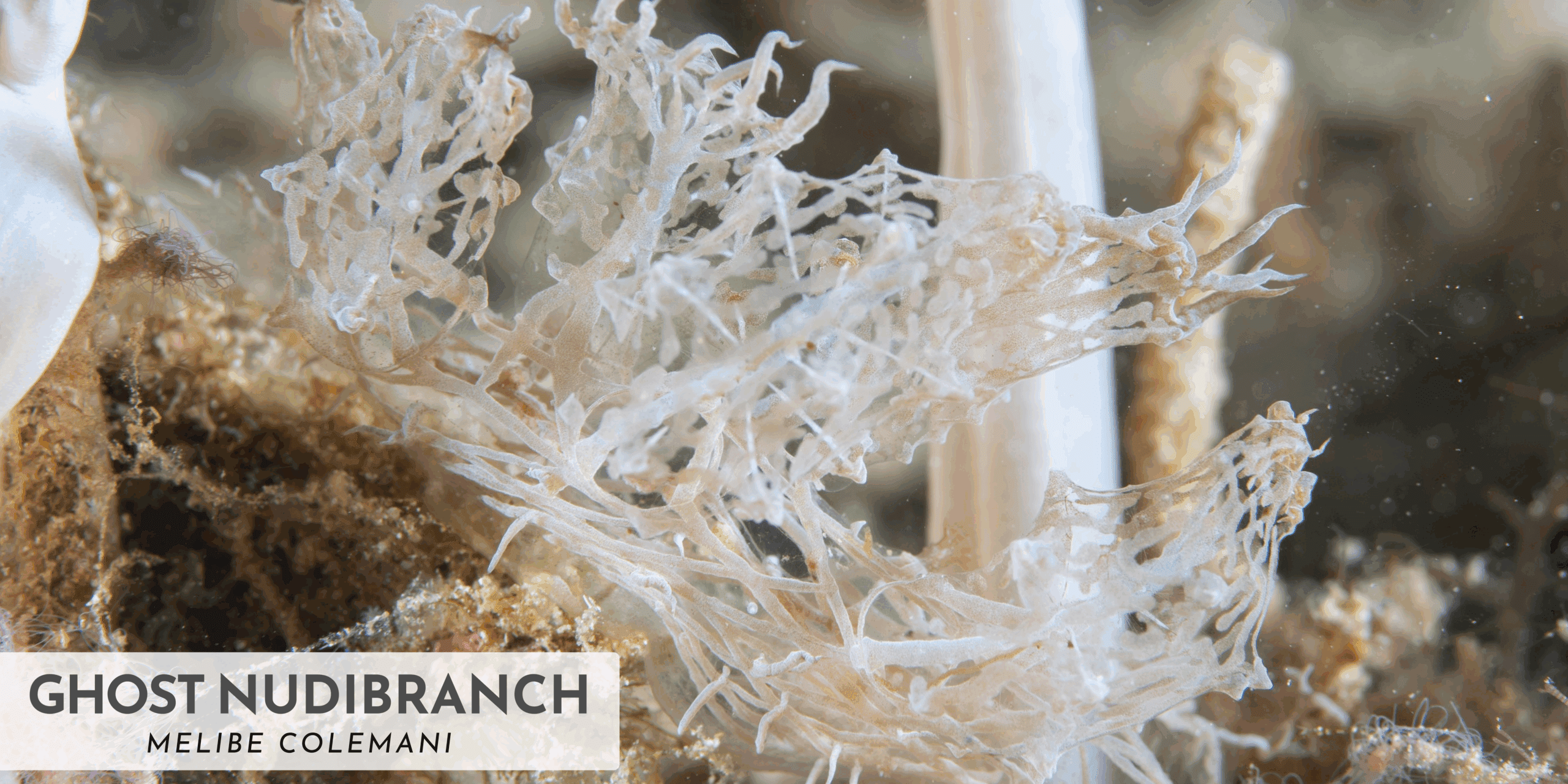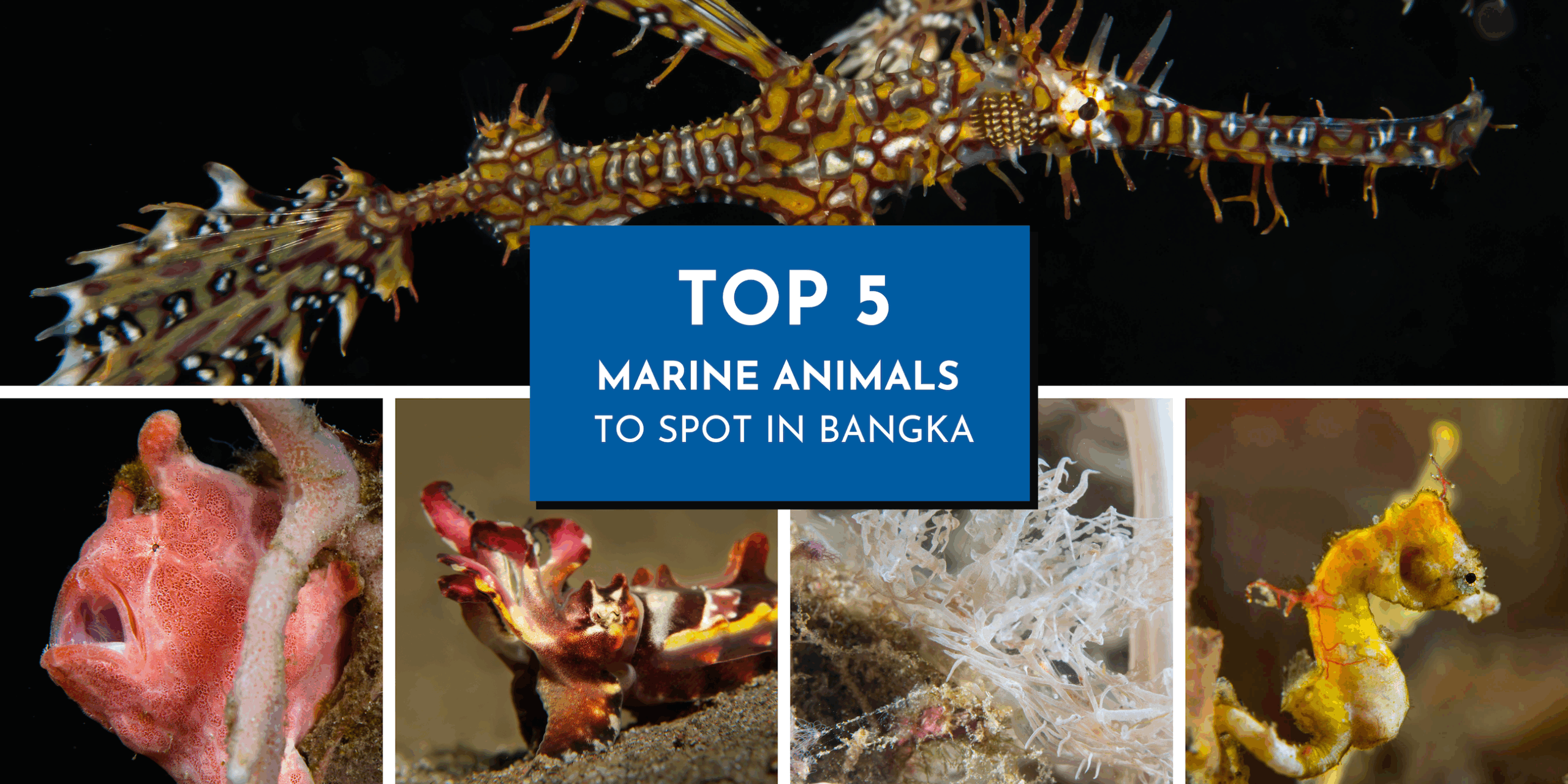
Frogfish: Masters of Disguise
Whenever people come to Murex Resorts for their diving holidays, we’re always fascinated to hear what they’re hoping to see. More often than not, there’s one group in particular that hops to the top of divers’ wish list: Frogfish.
Frogfish have that magical blend of rarity, charisma, and quirkiness. Their appearance and their behavior set them apart from virtually every other animal on the reef, making encounters with these incredible creatures a moment to treasure forever.
We figured it was time to take a closer look and answer some questions that commonly pop up in the diving community. What do frogfish look like? Where do they live? And what makes them so unique? In this article, we’ll answer all these questions and more. Let’s dive in…
Taxonomy and Etymology
Let’s start with the science. Frogfish are members of the anglerfish family (Antennariidae), of the order Lophiiformes. These names also give us clues about their appearance and their behavior. The common name – ‘frogfish’ – comes from their tendency to ‘hop’ along the seafloor, while the ‘Antennariidae’ family name is inspired by their distinctive antenna – a modified dorsal spine – which they use as a lure to attract prey.
Habitat and Home Range
Next, where do they live? Well, frogfish can be found in tropical and subtropical regions around the world, from the Atlantic and Pacific to the Indian Ocean and the Red Sea (interestingly, there are no frogfish in the Mediterranean).
Frogfish prefer equatorial reef habitats, where surface-level water temperatures are around 20°C (68 °F) or more. They make their home on the seafloor in shallow, tropical oceans, especially around coral reefs or rocky outcrops at depths of up to 100 meters (330 ft).
By far the greatest diversity of frogfish species can be found in the Indo-Pacific region, with Indonesia – and North Sulawesi in particular – being home to the highest concentration of these animals anywhere in the world. In the Lembeh Strait, for example, divers have documented at least nine different species.
Appearance (and Disappearance)
Frogfishes are small, short, and stocky creatures, often covered in spinules and other leaf-like appendages which help them to blend into their surroundings. This camouflage not only helps frogfish to hide from hunters, but also makes them highly successful ambush predators.
As if camouflage wasn’t impressive enough, some frogfish also have the ability to change their color; by forming symbiotic relationships with algae and hydrozoa, they are able to alter their appearance in much the same way that corals do. Furthermore, some species even mimic poisonous sea creatures to warn off potential predators. Juvenile painted frogfish, for example, are known to mimic toxic nudibranchs.
Getting Around
Another of the characteristics that makes frogfish unique, and sets them apart from most other marine animals, is the way they move. Unlike most fish, frogfish don’t actually swim much. Instead, they use their distinctive fins to walk or hop along the ocean floor. Their front pectoral fins have an elbow-like joint in them, which makes them look like they have legs.
But that’s not all. Frogfish have another creative solution for the problem of getting around – when they want to get from A to B more quickly, they suck water in through their mouths and blow it out through small openings behind their pelvic fins. In this way, frogfish are actually jet-propelled! Just one of the many incredible facts about these animals that makes them so fascinating to watch in the wild.
Hunting and Feeding
Frogfish generally don’t move quickly, but they don’t have to – with their camouflage, they’re able to lie in wait for unsuspecting meals to pass by. Then, using a built-in fishing rod (a modified dorsal spine with a lure on the end) they attract their prey in even closer, before striking.
The frogfish bite is one of the fastest movements in the animal kingdom – blink, and you’ll miss it! The speed of the frogfish’s strike is matched only by the size of its appetite – these ravenous hunters can devour prey up to twice their body size.
Five Fun Frogfish Facts:
-
- They like to fish – Many frogfish use a rod (called an illicium) and lure (called an esca) to attract their prey. Like all fisherfolk, this equipment varies widely from one angler to the next – some lures resemble shrimp, while others look like worms, fish, or squid. Some are even bioluminescent!
- They’re incredibly rare – The brilliantly named psychedelic frogfish (Histiophryne psychedelica) is one of the rarest fish species in the world. So far, it has only ever been spotted around the island of Ambon in Indonesia.
- They mate for life (sort of) – Not all male frogfish are endowed with a fishing rod to feed themselves. To survive, these males will fuse with a female in behavior that’s known – somewhat unromantically – as ‘sexual parasitism’. In return for a constant supply of food, she gets a lifetime’s supply of sperm.
- They produce huge amounts of eggs – Female frogfish can release between 40,000 and 180,000 eggs at a time, which are attached to a floating ribbon of mucus (called an epipelagic egg raft), which the male then fertilizes.
- They’re fast eaters – Frogfish have the fastest strike of any vertebrate animal on land or sea. These patient ambush predators may bide their time, but when they choose to strike, they swallow their prey in a matter of milliseconds.
Top Tips From Murex
Want to find frogfish on your diving trip to North Sulawesi? We have several dive sites where sightings – though not guaranteed – are relatively common. At Murex Bangka, we recently spotted several giant frogfish (Antennarius commerson) and some warty (or clown) frogfish (Antennarius maculatus). In Manado, we have also seen painted frogfish (Antennarius pictus) and clown frogfish on recent dives, and we have some black sand slopes where juvenile frogfish make great subjects for macro photography.
Want to Know More…?
From their incredible camouflage to their bizarre behavior, frogfish are truly unique and endlessly fascinating creatures. Next time you’re diving with us in North Sulawesi, keep an eye out—you might just spot one of these hidden treasures!
Hungry for more? For more fun facts about frogfish, and to see recent footage captured on Murex dive sites in North Sulawesi, watch this video on YouTube – part of our brand-new Explore More With Murex educational series. We’ll update this series every month, so stay tuned!
For even more information about these amazing animals, check out our Ultimate Guide to the Frogfish of North Sulawesi.




